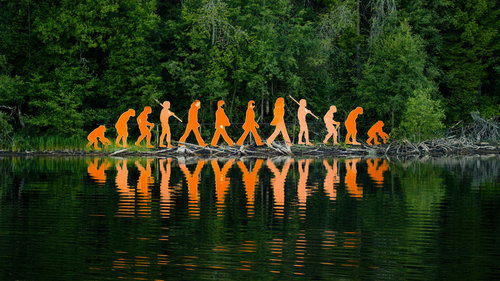For most of human history, it’s been recognized that we tend to follow the path of least resistance. We go to comical lengths to avoid work of even the most trivial sort. One of the classic examples of this quirk of human behavior is Eric J. Johnson and Daniel Goldstein’s study on organ donation rates. They noticed that the organ donation rates in countries like Austria, Belgium, France, and Hungary are many times greater than those in Denmark, the UK, Germany and the Netherlands. Why is this? Is it because of some cultural difference in how each of these groups of people values human life? Or, perhaps it’s caused by differing religious beliefs in the sanctity of the human corpse? We can come up with dozens of such stories. It turns out, however, that “the path of least resistance” explains this massive difference in donation rates. Countries with high, nearly unanimous, donation rates have opt-out systems, which require applicants to take action to not participate in their donation programs. Those with low donation rates? The opposite. They have opt-in systems that require citizens to actively enroll. In both groups, people take the path of least resistance – and we see the results clearly in the stats.
Checking a box on a driver’s license form, or making a quick phone call to enroll, isn’t much work, but it’s something – and, as you can see, this small amount of effort can be the difference between a “brave and selfless organ donor” and “a petty miser”. However, before we throw up our hands and bemoan this seemingly unfortunate feature of human nature, we should ask some questions: Is this an inevitable feature of our biology? Or, is this something that we can modify, and even eliminate, in due time?
In the developed world, infant mortality was still a massive problem as recently as the early 1900s. However, improved nutrition, medical technology, and a variety of other factors have allowed us to largely do away with this tragic staple of the human experience. Similarly, an improved understanding of biology, new training protocols, new shoe/equipment technology, and better nutrition have allowed modern athletes to do things that were unheard of 50 or 100 years ago. By improving the environment we develop in, we have consistently gotten bigger, faster, stronger, and smarter (as the Flynn Effect seems to show).
This tendency to follow the easiest, friction free path might be similar. An organism that is barely able to maintain homeostasis, because of a lack of health and ability to efficiently produce energy, is not one that is likely to weigh the pros and cons of the available options and put off instant gratification in the service of a greater plan. Perhaps our seeming laziness is due more to biological dysregulations caused by inadequate prenatal nutrition, interference by environmental toxins, or other unfortunate perturbations during critical developmental windows. What we may see as immovable features of a human nature might actually be symptoms of biological problems that, up until this point in history, we haven’t had the ability to remedy at scale. Providing a truly nurturing environment at scale is a problem that we have only begun to solve, but with the mindpower of seven billion people (and a bit of luck), I think it’s a problem we can tackle. Our freedom depends on it.
This article was originally posted on BigThink
Image: Possan





